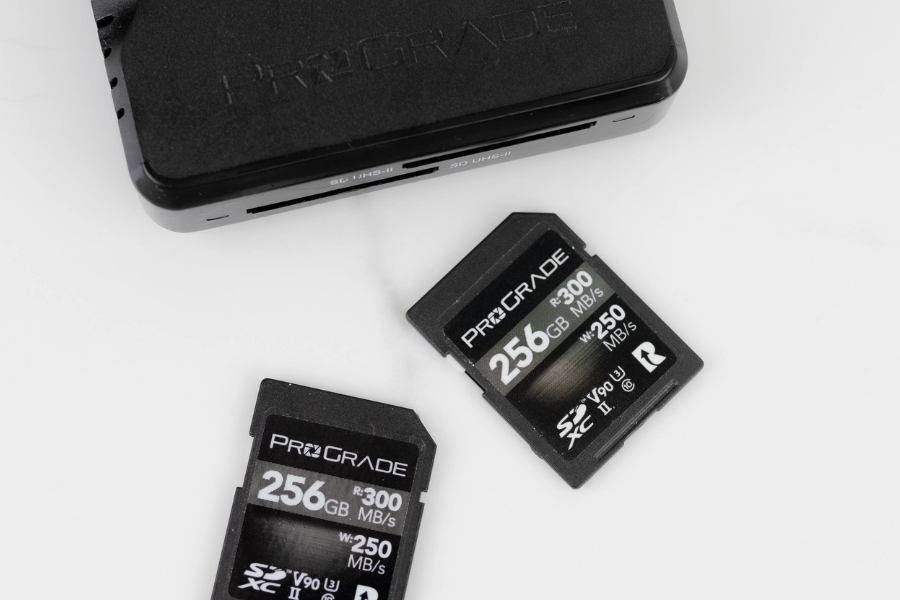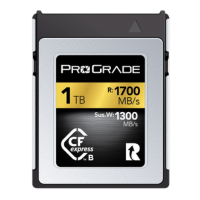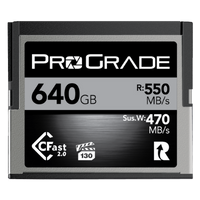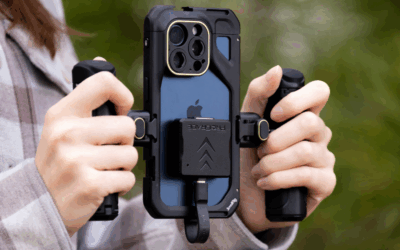Memory cards are unsung heroes, capturing fleeting moments and turning them into lasting memories. They are little workhorses that capture each pixel of our creative vision, frame after frame. Yet, even as they faithfully store our artistry, memory cards often harbor a silent struggle – they slow down and falter with time, dimming the spark of our creative process.
Have you felt the frustration of waiting for your card to catch up with your inspiration? Have you wished for memory cards that not only endure but also perform at their peak every time you press the shutter? The journey from a memory card’s fresh-out-of-the-box speed to its sluggish state isn’t just a matter of chance – it’s a story of maintenance and care.
In this article, we will unveil the secrets of keeping your memory cards not only alive but thriving. We’re not just concerned with preventing failures; we’re also focused on revitalizing the speed and responsiveness that your creative craft deserves. The memory card maintenance techniques we explore are designed to save you time, money, and creative frustration. They will transform your shooting experience from one of anxiety to one of excitement. So, keep on reading!
The Life of a Memory Card: Factors Affecting Durability
Like any other tool, memory cards have a lifespan influenced by various factors. Understanding these factors helps you take proactive steps to extend their longevity and performance. Here are the key elements that play a role in determining the lifespan of your memory cards:
1. Write Cycles
Memory cards, particularly those of the NAND flash variety, have a finite number of write cycles. A write cycle refers to the process of saving data onto the card. Over time, as you repeatedly write and delete files, the memory cells degrade, eventually leading to performance degradation and potential failure.
2. Quality
The old adage “you get what you pay for” rings true regarding memory cards. High-quality cards are built to withstand the rigors of regular use and provide better wear-leveling algorithms to distribute write cycles evenly across the card. Investing in reputable brands and models can significantly enhance the card’s overall lifespan.
3. Usage Patterns
How you use your memory card can significantly impact its lifespan. Consistently deleting images from the card mid-shoot to make space for new photos fragments the data and can accelerate wear and tear. Additionally, abrupt removal during data transfer or while the card is in use can lead to data corruption or card failure.
4. Environmental Conditions
High-end memory cards can withstand environmental factors such as harsh temperatures, humidity, dust, and static electricity, but you still shouldn’t expose your cards to these conditions willingly. And after you do, proper steps should be taken to avoid damaging your card as well as other equipment.
5. Proper Handling
How you handle your memory card also matters. Inserting and ejecting the card correctly, using proper card readers, and storing your cards in protective cases when not in use can all contribute to their longevity.
Best Practices for Memory Cards: Common Mistakes and How to Prevent Them
In the quest to keep your memory cards performing at their best, it’s equally important to steer clear of common pitfalls that could lead to premature failure. Following these suggestions can help you maintain the integrity and reliability of your memory cards.
1. Handle With Care
Rough handling of memory cards during insertion, removal, or transfer is one of the leading causes of decreased lifespan. When inserting or removing your memory card, do so with gentle precision. Avoid using excessive force or jerking motions, as these actions can damage the card’s connectors or the card slot in your camera or device.
Similarly, always power off your camera or device before inserting or removing a memory card. This prevents potential data corruption and ensures a safe transition for your card. Ejecting your memory card abruptly from your camera or card reader or removing your device’s battery while it’s still in use can lead to data corruption, even when there is seemingly no ongoing data transfer process.
2. Store Memory Cards Properly
Storing your memory cards in your pants pockets or loosely in a bag is not ideal, to say the least. When not in use, store your memory cards in protective cases designed for them. These cases shield cards from physical damage, dust, and moisture.
Furthermore, choose a cool, dry storage environment for your memory cards. Avoid exposing them to direct sunlight, drastic temperatures, and humidity.
3. Keep Memory Cards Clean
If you notice any dirt, moisture, or smudges on your memory card’s contacts, gently wipe them clean with a soft, dry microfiber cloth. Avoid using liquids or abrasive materials.
Likewise, when inserting your memory card into a camera or device, ensure the slot is debris-free. Dust or dirt can damage both the card and the slot.
Keeping Tabs: Tools and Techniques for Monitoring and Maintaining Memory Card Health
Just as a doctor monitors your health to catch potential issues early, you should keep an eye on your memory cards’ well-being to prevent unexpected failures. Utilizing the right tools and techniques ensures your memory cards are in top shape and ready for action. Here is a proven 5-step protocol for monitoring and maintaining memory card health:
Step 1: Inspect Your Memory Cards
Regularly inspect your memory cards for physical damage, including scratches, cracks, or bent pins. Any sign of damage could affect the card’s performance and data integrity. If you spot any issues, consider retiring the card or contacting the manufacturer for assistance.
Step 2: Check Your Memory Cards Health
An essential tool for monitoring the health of your memory cards is Refresh Pro, specifically designed to be used in conjunction with ProGrade Digital Memory Cards and ProGrade Digital Workflow Readers. The Refresh Pro health score informs the user whether a memory card can be confidently used, should be used with caution, or should be replaced. This score indicates whether a memory card can be confidently used, should be used with caution, or should be replaced.
In addition to specialized software like Refresh Pro, there are other methods to monitor card health using your computer:
- Perform regular error checking on your memory cards. On a Windows computer, the built-in “Check Disk” utility can be used to scan and fix file system errors. For macOS users, the “First Aid” feature in Disk Utility serves a similar purpose.
- Some memory cards support Self-Monitoring, Analysis, and Reporting Technology (SMART) data. This data provides vital information about the card’s health, including its usage and potential issues. Using compatible software, you can read the SMART data to assess the performance and health of your memory cards
Step 3: Defragment and Reformat Your Memory Cards
Maintaining your memory card’s health and optimal performance is critical for its longevity. One way to achieve this is by formatting the card. Formatting effectively erases all data from the card and restores it to its original state. This process helps to prevent data corruption and can improve the read and write speeds, as well as increase the capacity of the memory card.
Whenever you delete files from a memory card, it creates “holes” in the data. This activates a “garbage cleaning” process as the card tries to patch these gaps. This data reallocation process puts the memory card through additional read-write cycles, which can cause wear and tear over time. To put it simply, even though you might assume that using your card once—filling it and then emptying it—equals just one cycle, the reality is that if there’s any fragmentation, some parts of the card might experience multiple cycles, leading it to age faster. Therefore, it’s recommended to format your memory card regularly.
However, formatting large-capacity cards using your computer can sometimes take many hours. That’s where the Refresh Pro, a software for ProGrade Digital memory cards, comes into play again. Besides card health monitoring, Refresh Pro has a specific “sanitize” command. This will defragment and reformat the card to a factory-new condition in mere seconds and makes it perform at its best.
Learn more about how NAND flash memory works, how to combat pointless data reallocation, and increase the life expectancy of your memory cards: NAND Flash Memory and Maintenance 101
Beyond the Basics: Extending the Life of Your Memory Card
Preserving your memory card’s health is all about smart and mindful practices. To truly make your memory cards last, consider these advanced tips that go beyond the basics:
1. Optimize Post-Processing Workflow
When editing photos or videos, it’s best to avoid excessive saving directly on the memory card. Frequent saves during editing can contribute to additional write cycles and wear. To minimize this impact, consider copying your images to a hard drive for editing. This reduces the card’s workload and helps extend its lifespan.
2. Know Your Gear and Craft
When capturing moments with your camera, honing your skills can make a significant difference. Familiarity with your camera’s settings and techniques reduces the chances of taking blurry or otherwise failed shots. This leads to fewer retakes and less strain on your memory card.
Additionally, when it comes to filming, mastering the art of timing is crucial. Knowing when to start recording and when to pause prevents your memory card from filling up with unnecessary footage. Roll the camera when capturing essential moments that contribute to your narrative, avoiding the accumulation of excess footage that serves no purpose.
Often, we feel compelled to record every second, thinking we might need it for editing later. This results in hours of footage for a short clip. Even the smallest actions seem worth recording due to the fear of missing out. To overcome this, a solid pre-production process is key. Plan your shoots in advance so you know when you’ve captured what you need. Set a limit for extra footage you capture. While it’s important to stay flexible, especially for live events, this approach helps prevent unnecessary strain on your memory card and speeds up your editing workflow. No point in bringing home 3 hours of footage to make a 2-minute video clip, unless it’s some sort of a time-lapse kind of clip.
3. Regularly Update Firmware
Manufacturers release firmware updates to address potential issues and enhance performance. To ensure peak performance, especially as new firmware is released in cameras, you can invest in ProGrade memory card and upgrade your memory card firmware using a ProGrade Digital Reader and the Refresh Pro tool. Make it a practice to check for these updates periodically.
Knowing When to Let Go: Recognizing When to Replace a Memory Card
Recognizing when it’s time to retire a memory card can save you from potential data loss and frustrating experiences. Here are key signs to watch for that indicate it might be time to replace a memory card:
- Frequent Read/Write Errors – If you notice an increasing number of read/write errors when using your memory card, it’s a clear indicator that the card is struggling. These errors could lead to data corruption, making it unsafe for further use.
- Sluggish Performance – A memory card that’s become noticeably slower in read and write speeds might be approaching the end of its life. Slow performance, even after formatting, suggests your memory card may have reached a point where it’s no longer reliable.
- Data Loss or Corruption – Experiencing sudden data loss, corrupted files, or formatting errors may indicate potential underlying problems. Especially when you have not mishandled the card and always eject it properly.
- Physical Damage – Obvious physical damage, such as cracks, scratches, or bent pins, compromises the card’s functionality. If the damage is severe, it’s time to replace the card.
- Compatibility Problems – Newer devices and cameras may not recognize older memory cards due to compatibility issues. If you find that your card is no longer compatible with your equipment, it’s time to consider an upgrade. Similarly, if your memory card behaves inconsistently—working fine on some occasions but failing to be recognized on others—it’s a sign that the card’s internal components might be deteriorating.
- Age and Usage – Consider the age and usage of your memory card. If it’s been heavily used for several years, it’s naturally more prone to errors than a brand-new card.
Prioritize data safety and minimize potential disruptions by heeding these warning signs and proactively upgrading your memory cards when needed. Remember, the investment in a new memory card far outweighs the risk of data loss and compromised performance.
Conclusion: Maintaining and Extending the Life of Your Memory Card
Memory cards aren’t just chips of plastic; they’re the invisible threads that tie your art together. They store your vision, your effort, and your stories.
Remember, a well-maintained memory card not only safeguards your cherished work but also enhances your efficiency, allowing you to focus on what truly matters—capturing exceptional images and videos. By incorporating these practices into your workflow, you not only extend the life of your memory cards but also elevate the quality of your creative endeavors.
So, as you embark on your photographic and videographic pursuits, let this guide serve as your compass for maintaining and extending the life of your memory cards. With the right care and attention, you’re equipped to navigate the challenges and make the most of every click and frame.





